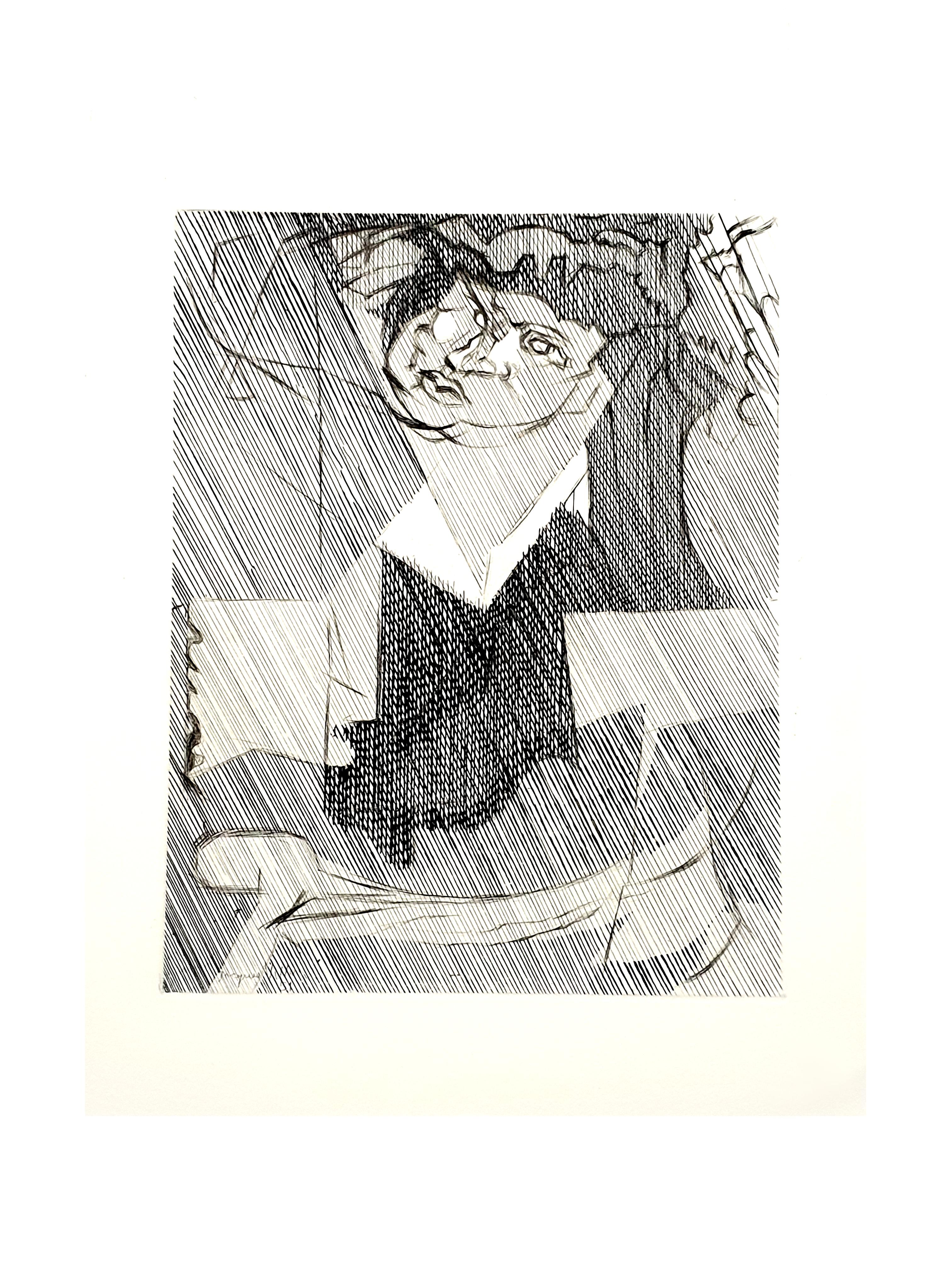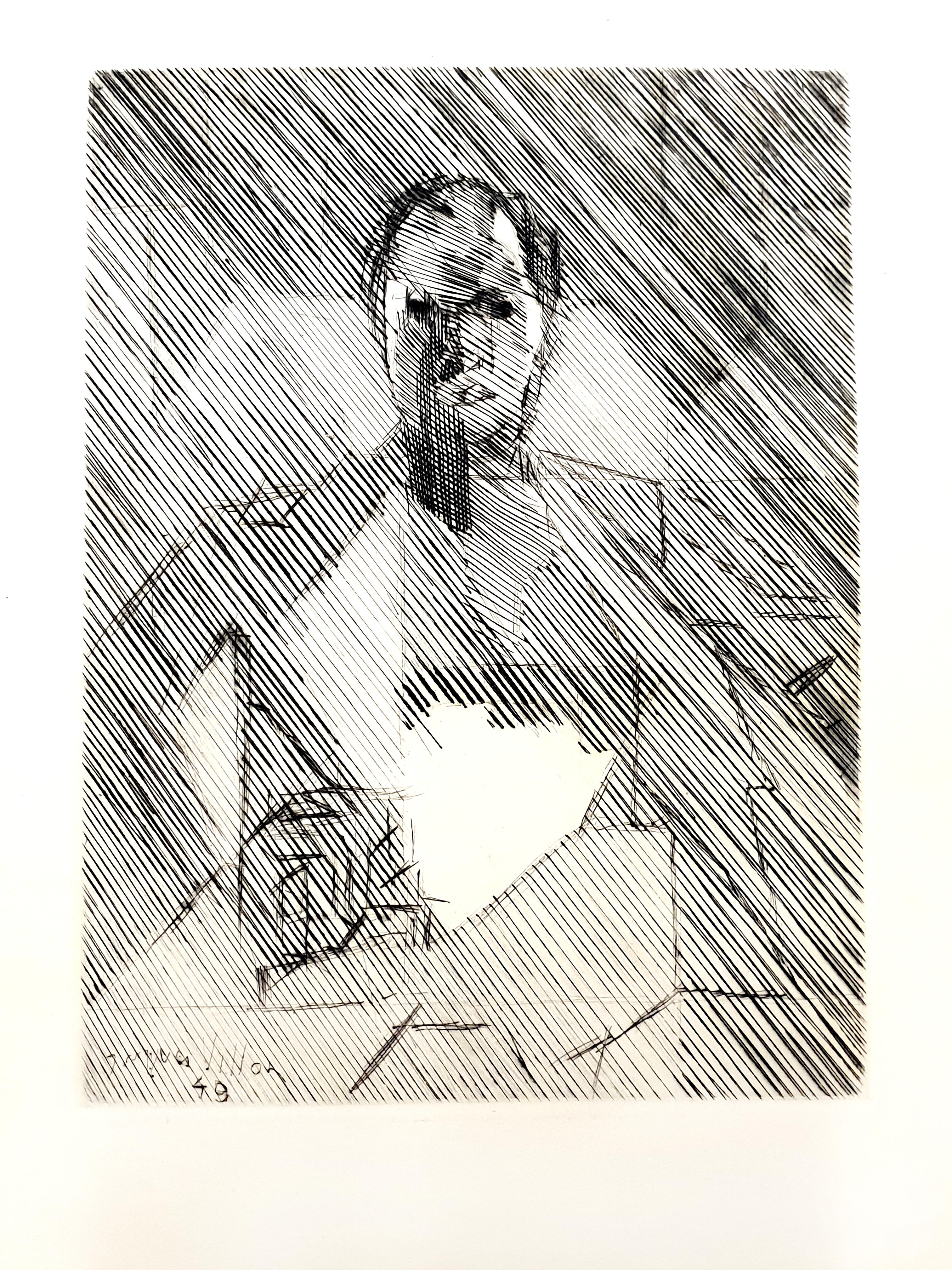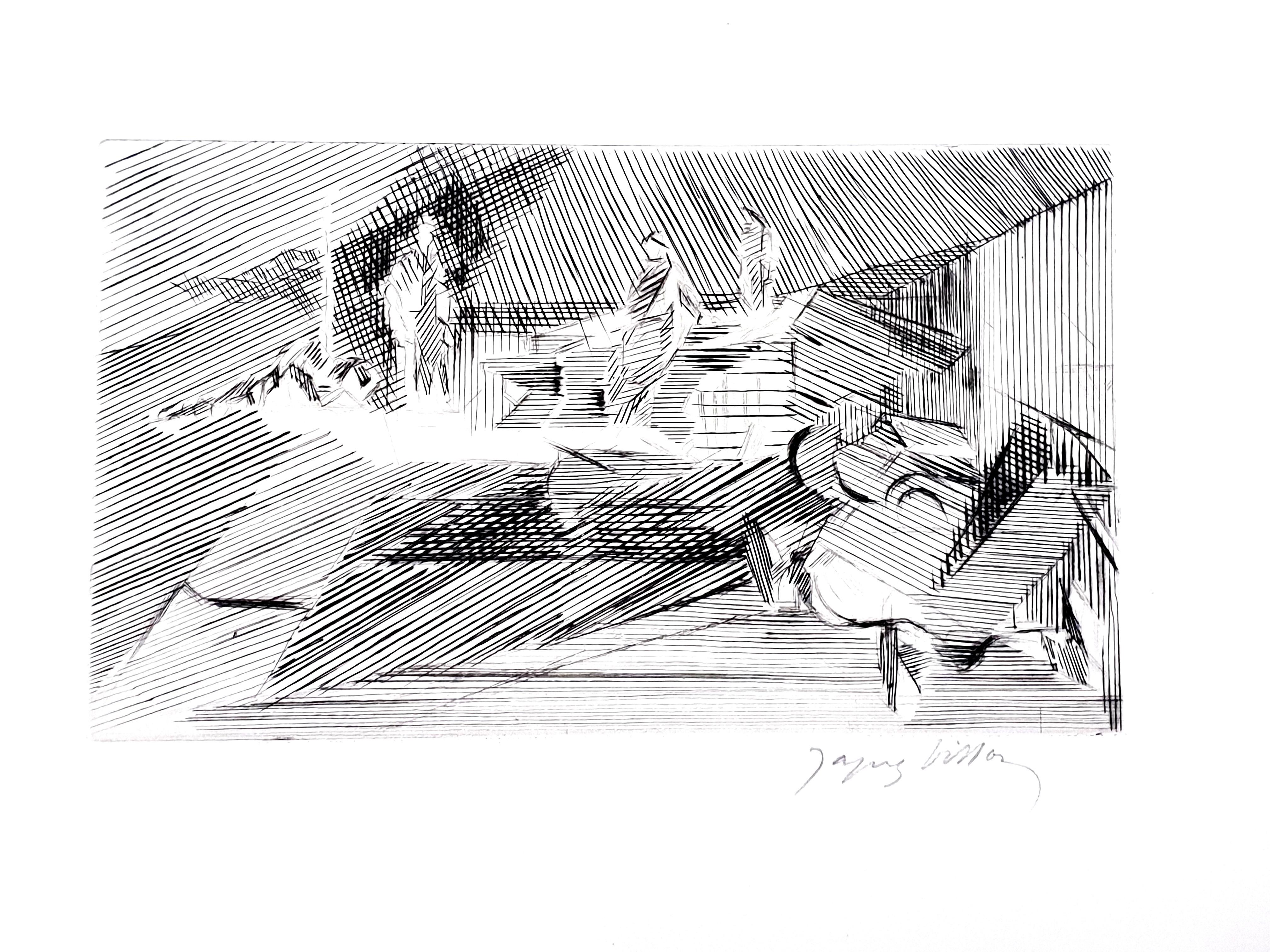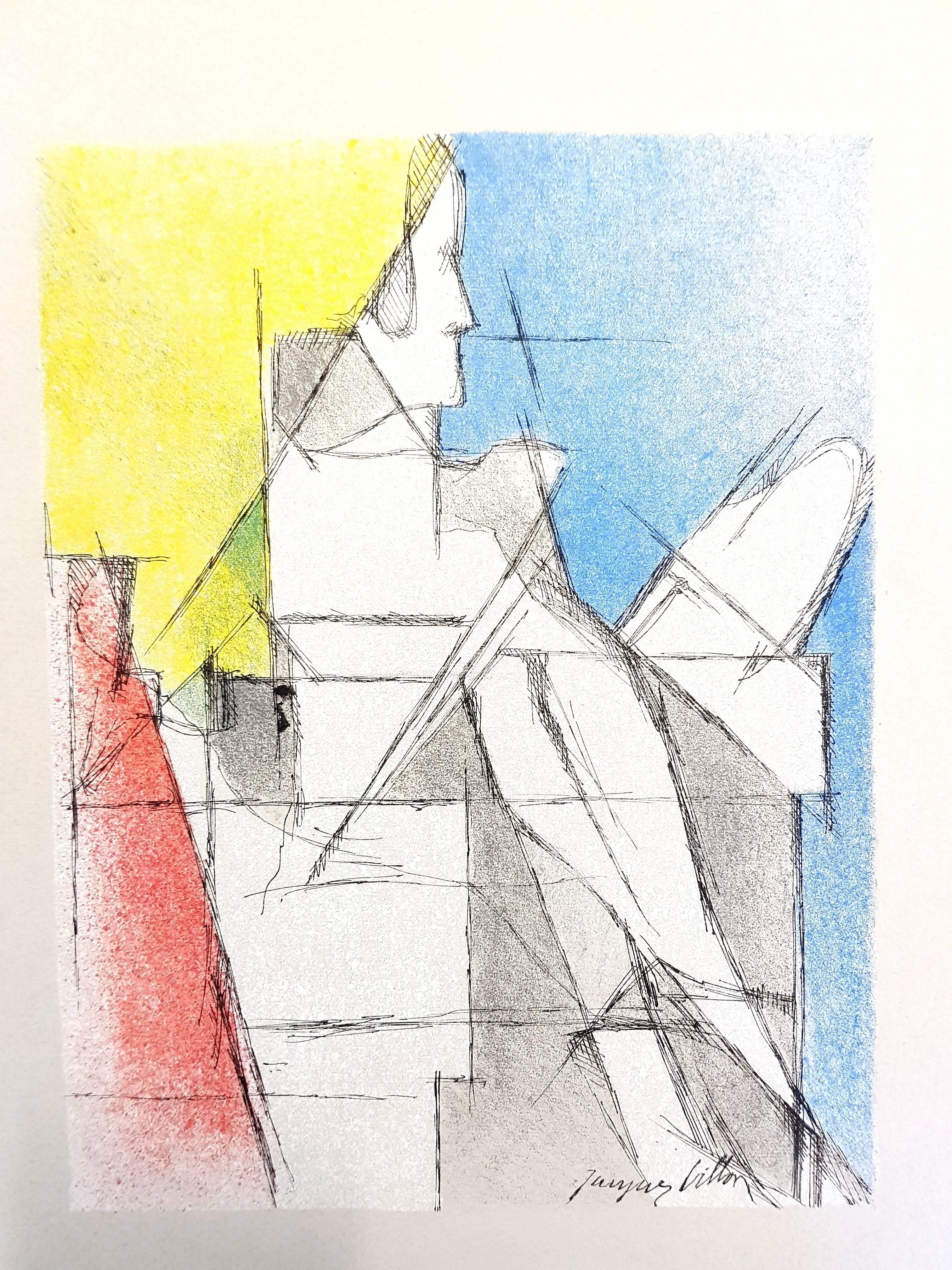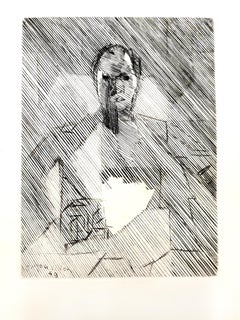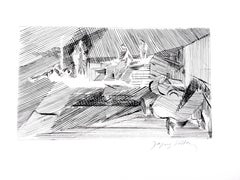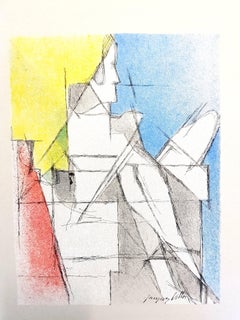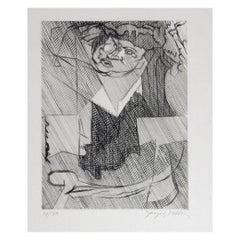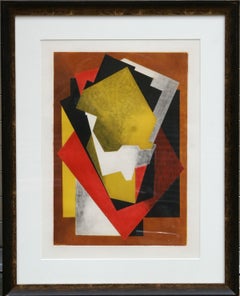Items Similar to Jacques Villon - Two Cubist Vases - Original Etching
Want more images or videos?
Request additional images or videos from the seller
1 of 13
Jacques VillonJacques Villon - Two Cubist Vases - Original Etching1946
1946
$1,654.17
£1,254.35
€1,400
CA$2,328.55
A$2,544.01
CHF 1,333.33
MX$30,376.31
NOK 16,873.36
SEK 15,734.06
DKK 10,664.88
About the Item
Jacques Villon - Two Cubist Vases - Original Etching
1950
Signed in pencil
Edition of 40
Jacques Villon (1875 - 1963)
Jacques Villon was born Gaston Duchamp on July 31, 1875, in Damville, Normandy. His family is one of remarkable artistic repute; he and his three siblings Marcel Duchamp, Raymond Duchamp-Villon, and Suzanne Duchamp would all make important contributions to 20th-century art. While still a lycée student in Rouen, he began his artistic training under his grandfather, Emile Frédéric Nicolle, a shipbroker and artist. Nicolle taught Villon engraving and printmaking, and in 1891 he was the subject of one of Villon’s earliest prints. In January 1894 Villon moved in with his brother Raymond in Paris’s Montmartre neighborhood and began to study law at the University of Paris. He soon lost interest in legal studies and instead spent his time submitting drawings to various magazines and newspapers, some of which were politically oriented. Partly in order to distance his family's name from these publications, he changed his name to Jacques Villon (an homage to French medieval poet François Villon). In 1895 he began study at the Ecole des Beaux-Arts and frequented the Atelier Cormon.
For almost 10 years Villon worked largely in graphic media, contributing drawings to Parisian illustrated papers and making color prints and posters. In 1903 he helped organize the drawing section of the first Salon d’Automne, which would become one of the most significant annual exhibitions in the history of modern art. His first gallery exhibition, shared with his brother Raymond, took place at Galerie Legrip, Rouen, in 1905. He studied at the Académie Julian in Paris between 1904 and 1905, painting in a Neo-Impressionist style. In 1906 Villon settled in Puteaux and began to spend more time painting; by 1910 he had devoted himself primarily to painterly pursuits. In 1911, he and Duchamp-Villon helped found the Puteaux Group, a collective of Cubist artists that held meetings in Villon’s studio; its participants included Robert Delaunay, Marcel Duchamp, Albert Gleizes, František Kupka, Fernand Léger, Francis Picabia, and others. The following year, working with the Puteaux Group, Villon named and helped mount the Salon de la Section d'Or, a seminal exhibition in the development of the Cubist movement.
Villon exhibited nine paintings at the 1913 New York Armory Show, and his first solo exhibition in the United States was held at the Societé Anonyme, New York, in 1921; by the 1930s he was better known in the U.S. than in Europe. In 1932 he joined and began to exhibit with the Abstraction-Création group. An important presentation of his work was held in Paris in 1944 at the Galerie Louis Carré, from that time forward his exclusive representative. Villon received honors at a number of international exhibitions, including First Prize at the Carnegie International (1950) and Grand Prize for Painting at the Venice Biennale (1956). In 1955 he designed stained-glass windows for a cathedral in Metz, France, along with his contemporaries Marc Chagall and Roger Bissière. Villon died in Puteaux on June 9, 1963, at the age of 87.
- Creator:Jacques Villon (1875-1963, French)
- Creation Year:1946
- Dimensions:Height: 14.97 in (38 cm)Width: 11.03 in (28 cm)Depth: 0.04 in (1 mm)
- Medium:
- Movement & Style:
- Period:
- Condition:
- Gallery Location:Collonge Bellerive, Geneve, CH
- Reference Number:1stDibs: LU16124130452
Jacques Villon
Jacques Villon was born Gaston Duchamp in 1875. He was the oldest brother of the artists Marcel Duchamp, Suzanne Duchamp-Crotti and the sculptor Raymond Duchamp-Villon. Initially a law student, in 1894 he went to Paris to study art. It was there that he met Henri Toulouse-Lautrec and other influential artists in Paris, and changed his name to Jacques Villon, after the poet. Villon made prints of some of the most well-known belle-époque portraits and genre scenes of the early twentieth century. Around 1911, he came under the influence of Picasso and other cubists, and became a leading exponent of the style, exhibiting in the 1913 Armory Show in New York. In 1922, the Galerie Bernheim-Jeune commissioned Villon to produce a series of color aquatints after 38 major nineteenth- and twentieth-century paintings. This series included works by Pierre Auguste Renoir, Henri Matisse, Pablo Picasso, Paul Cezanne, Georges Braque, Raoul Dufy, Amadeo Modigliani, Edouard Manet, Pierre Bonnard, and others. Artists who were alive at the time of the printing collaborated with Villon, and signed the prints. The project took ten years to complete. Several of these prints are valued highly today, and some went on to be reproduced by the Louvre Museum as photo-etchings. Villon's 'cubist' etchings, with their characteristic cross-hatching, are amongst the most renowned prints of the twentieth century. Jacques Villon's long career brought him fame. The diverse nature of his paintings, from end-of-the-century portraits to cubist and abstract styles to graphic works, made him a major figure in twentieth-century art. He was made a Grand Officer of the Légion d'Honneur, and upon his death in 1963, and he was given a state funeral.
About the Seller
4.9
Gold Seller
Premium sellers maintaining a 4.3+ rating and 24-hour response times
Established in 2015
1stDibs seller since 2015
969 sales on 1stDibs
Typical response time: 1 hour
- ShippingRetrieving quote...Shipping from: Collonge Bellerive, Geneve, Switzerland
- Return Policy
More From This Seller
View AllJacques Villon - Cubist Man - Original Etching
By Jacques Villon
Located in Collonge Bellerive, Geneve, CH
Jacques Villon - Cubist Man - Original Etching
From the literary review "XXe Siècle"
1951
Dimensions: 32 x 24 cm
Publisher: G. di San Lazzaro.
Unsigned and unumbered as issued
Category
1950s Modern Abstract Prints
Materials
Etching
Jacques Villon - Cubist Man - Original Etching
By Jacques Villon
Located in Collonge Bellerive, Geneve, CH
Jacques Villon - Man- Original Etching
1949
Signed in the plate
Dimensions : 44.5 x 32.5 cm
Category
1940s Modern Portrait Prints
Materials
Etching
Jacques Villon - Cubist Landscape - Original Etching
By Jacques Villon
Located in Collonge Bellerive, Geneve, CH
Jacques Villon - Cubist Landscape - Original Etching
Circa 1950
Signed in pencil
Jacques Villon (1875 - 1963)
Jacques Villon was born Gaston Duchamp on July 31, 1875, in Damville,...
Category
1950s Modern Landscape Prints
Materials
Etching
Jacques Villon - Original Lithograph
By Jacques Villon
Located in Collonge Bellerive, Geneve, CH
Jacques Villon - Original Lithograph
Lithograph, 1964
Dimensions: 32 x 24 cm
Revue Art de France
Pierre Soulages or the "painter of black" as he is often referred to, has rightfull...
Category
1960s Abstract Geometric Abstract Prints
Materials
Lithograph
Jacques Villon - Cubist Cavern - Original Etching
By Jacques Villon
Located in Collonge Bellerive, Geneve, CH
Jacques Villon - Cubist Cavern - Original Etching
1949
Signed in pencil
Dimensions : 12.5 x 16 cm
Category
1940s Modern Landscape Prints
Materials
Etching
Jacques Villon - Landscape - Original Etching
By Jacques Villon
Located in Collonge Bellerive, Geneve, CH
Jacques Villon - Landscape - Original Etching
1949
Signed in pencil and numbered
Dimensions : 28 x 38 cm
Category
1940s Modern Landscape Prints
Materials
Etching
You May Also Like
Cubist composition - Original Etching - 1965
By Jacques Villon
Located in Paris, IDF
Jacques Villon
Cubist composition
Original etching (printed in Atelier Manuel Robbe)
Printed signature in the plate
On Arches vellum 38 x 28 cm (c. 15 x 11 in)
INFORMATION :
Edite...
Category
1960s Cubist Figurative Prints
Materials
Etching
Maternite, Signed Cubist Etching by Jacques Villon
By Jacques Villon
Located in Long Island City, NY
Artist: Jacques Villon, French (1875 - 1963)
Title: Maternite
Year: 1952
Medium: Etching, signed in pencil
Edition: 75 (un-numbered)
Image Size: 11 x 7.5 inches
Size: 16 x 13 in. (40...
Category
1950s Cubist Figurative Prints
Materials
Etching
Jacques Villon Cubist Original Etching, 1951, “Figure de Femme”
By Jacques Villon
Located in Phoenix, AZ
Jacques Villon original etching “Figure de Femme” in the Cubist Surreal style.
Hand signed and numbered. Small Edition, created 1951.
Edition of 30 of which this print is no. 21. Unm...
Category
Mid-20th Century Abstract Paintings
Materials
Paper
Cubist Composition, Aquatint Etching by Jacques Villon
By Jacques Villon
Located in Long Island City, NY
Artist: Jacques Villon, After, French (1875 - 1963)
Title: Composition
Year: 1927 (printed circa 1965)
Medium: Aquatint Etching, Signed and dated '27' in the plate
Image: 19 x 13.5 i...
Category
Mid-20th Century Cubist Abstract Prints
Materials
Etching, Aquatint
Ajournement IV
By Jacques Villon
Located in San Francisco, CA
Artist: Jacques Villon
Title: Ajournement IV
Year : 1959
Medium: Etching
Edition: Inscribed Bon A Tirer (Trial Proof) in pencil
Paper: Wove
Image size: 6 x 5 inches
Signature:...
Category
Mid-20th Century Abstract Abstract Prints
Materials
Etching
Composition (Ginestet/Pouillon 65-72), Jacques Villon, Huit lithographies
By Jacques Villon
Located in Southampton, NY
Lithograph on vélin d’Arches paper. Signed in pencil and unnumbered, as issued. Good condition. Notes: From the folio, Jacques Villon, Huit Lithographies Originales, 1962. Published ...
Category
1940s Modern Landscape Prints
Materials
Lithograph
$5,196 Sale Price
20% Off
Free Shipping
More Ways To Browse
Toots Shor Bar
Vintage Hair Ribbon
1790 Oil Painting
1960s Vintage Oil Paintings
3d Acrylic Wall Art
Abstract Bird Wood
Abstract Mother Child
Antique Kitten Painting
Art Bra
Art Plexi Box
Belmont Park
Birds Of A Feather
Chinese Rice Paper Painting
Climbing Sculptures
Cone Sculpture
Dinosaur Art
Folk Art Texas
Kaws New York
